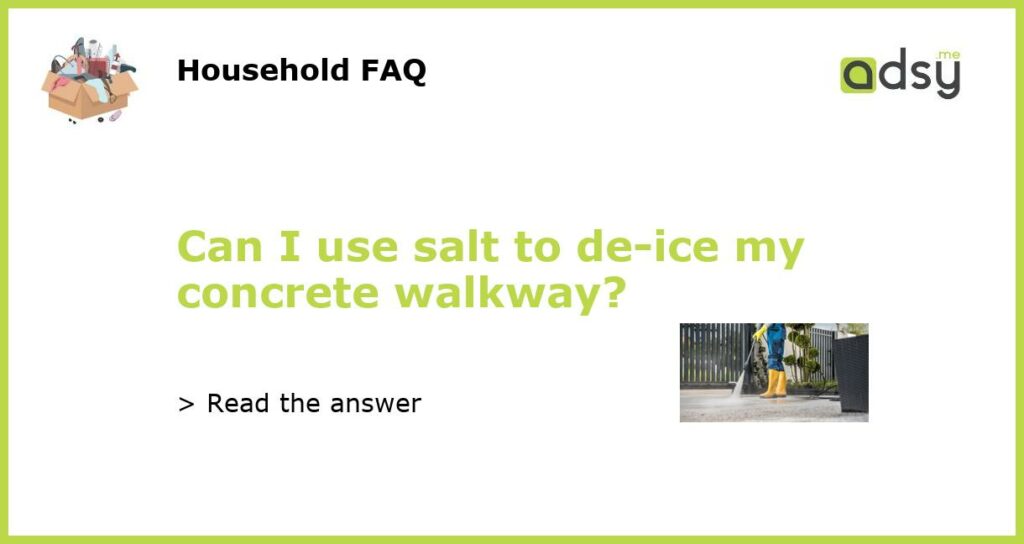Yes, you can use salt to de-ice your concrete walkway, but with caution
If you’re looking for a quick and easy solution to get rid of ice on your concrete walkway, using salt is a popular method. However, there are a few things you need to keep in mind in order to prevent any damage to your concrete and the environment.
The pros and cons of using salt
Using salt to de-ice your concrete walkway has both pros and cons. One of the biggest advantages of using salt is its effectiveness. Salt lowers the freezing point of water, which helps to quickly melt the ice and snow on your walkway. It is also relatively inexpensive and easily accessible.
However, there are a few downsides to using salt. Firstly, salt can be corrosive and may damage your concrete over time. This is especially true if your walkway is made of older or more porous concrete. Additionally, the runoff from salt can harm nearby plants and pollute water bodies like rivers and lakes. It is important to use salt in moderation and minimize its impact on the environment.
Tips for using salt to de-ice your concrete walkway
If you choose to use salt as a de-icing agent for your concrete walkway, here are a few tips to minimize any potential damage:
- Choose the right type of salt: There are several different types of salt available, including rock salt, calcium chloride, and magnesium chloride. Calcium chloride and magnesium chloride are less harsh on concrete and the environment compared to rock salt. Consider using one of these alternatives if you are concerned about potential damage.
- Apply salt sparingly: Use salt in moderation to prevent excessive build-up on your walkway. Just a light dusting should be sufficient to melt the ice. If you apply too much salt, it can lead to a higher concentration of salt in the runoff, which can be harmful to plants and aquatic life.
- Prevent salt from entering your home: When using salt on your walkway, make sure to create a barrier or pathway to prevent the salt from being tracked into your home. Salt can leave residue on your shoes and can damage indoor surfaces like carpets and hardwood floors.
- Clean your walkway regularly: After the ice has melted, make sure to clean your walkway thoroughly to remove any remaining salt or residue. This will help to prevent any long-term damage to your concrete.
- Consider alternative de-icing methods: If you are concerned about the potential damage caused by salt, there are several alternative de-icing methods you can try. These include using sand or kitty litter for traction, using a snow shovel or snow blower to remove snow, or using chemical de-icers specifically designed for use on concrete surfaces.
In conclusion, you can use salt to de-ice your concrete walkway, but it should be used with caution. While salt is an effective de-icing agent, it can also be damaging to your concrete and the environment. By following the tips mentioned above and using salt in moderation, you can minimize any potential damage and keep your walkway safe and ice-free.

